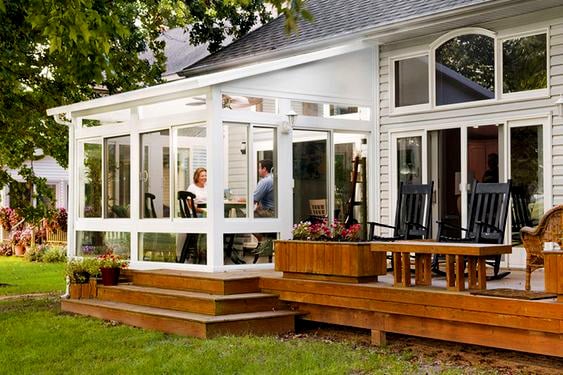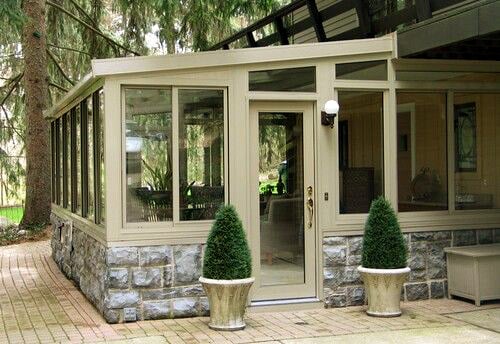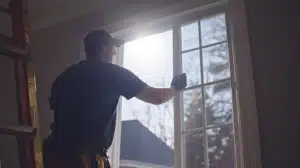Patio Enclosures: Enhance Your Outdoor Space and Boost Property Value in 2025
In 2025, outdoor living spaces are a hot trend, and one of the best ways to upgrade your backyard is with a patio enclosure. A well-designed patio enclosure can transform an outdoor area into a cozy retreat, add usable square footage, and increase your home’s property value. This guide explores the different types of patio enclosures, their benefits, installation tips, and the latest design trends.
What Is a Patio Enclosure?
A patio enclosure is an enclosed outdoor space attached to a home, typically offering a weather-protected area that allows homeowners to enjoy nature while staying sheltered. Patio enclosures range from simple screened-in structures to fully insulated glass rooms with heating and cooling systems.
Types of Patio Enclosures
- Screened-In Enclosures: Perfect for keeping insects out while allowing airflow. Ideal for regions with mild climates.
- Glass Enclosures (Sunrooms): Offers a panoramic view and protects against wind and rain; great for year-round use.
- Three-Season Rooms: Enclosed with glass or acrylic panels, these are usable during spring, summer, and fall.
- Four-Season Rooms: Fully insulated and equipped with HVAC, allowing for comfortable use in all weather conditions.

Benefits of Installing a Patio Enclosure
1. Extended Living Space
A patio enclosure provides additional living space that can be used for dining, relaxing, or entertaining. This extra area adds versatility to your home and can be easily customized with furniture and decor to fit any purpose.
2. Increased Property Value
Patio enclosures are considered valuable home additions. They enhance curb appeal and can increase the home’s overall square footage, which is attractive to potential buyers. Homeowners can expect a return on investment (ROI) of up to 70% for high-quality patio enclosures.
3. Protection from the Elements
Patio enclosures allow you to enjoy the outdoors while protecting yourself from harsh weather. Glass and screened enclosures block UV rays, keep out rain and snow, and provide wind protection, making your outdoor space more comfortable and usable throughout the year.
4. Reduced Insect Problems
Screened and glass patio enclosures help keep insects out, providing a bug-free environment. For those who live in areas where insects are common in warm months, this feature is a major advantage.
5. Enhanced Energy Efficiency
Some patio enclosures, especially four-season rooms, offer energy-efficient designs that improve insulation. Quality glass and frames reduce heat transfer, helping maintain a comfortable temperature without overworking your HVAC system.
Choosing the Right Patio Enclosure: Key Considerations
When choosing a patio enclosure, consider the following factors to ensure it fits your home’s style and climate needs:
1. Climate Compatibility
If you live in a region with extreme temperatures, a four-season room with insulation and HVAC is ideal. For moderate climates, a screened-in or three-season room may provide enough comfort.
2. Budget and ROI
Patio enclosures can range widely in cost. Screened-in enclosures tend to be more affordable, while four-season rooms with insulation and HVAC require a larger investment. Consider your budget and the ROI based on your local real estate market.
3. Materials
Choose materials based on durability, aesthetics, and energy efficiency. Vinyl and aluminum frames are common for their durability and low maintenance. Glass quality is also essential; low-emissivity (Low-E) glass can reduce UV rays and improve energy efficiency.
4. Design Style
From minimalist to rustic, patio enclosures come in a variety of styles. Think about your home’s current aesthetic and choose an enclosure design that complements it.
5. Local Building Codes
Check with your local building authority about permits, regulations, and any restrictions on building a patio enclosure. Understanding these requirements can save you from costly fines or changes later on.
Popular Patio Enclosure Ideas and Trends for 2025
Stay ahead with these popular design trends for patio enclosures in 2025:
1. Biophilic Design
Incorporating elements of nature, such as live plants, natural wood, and stone, is a top trend. A biophilic design can turn your patio enclosure into a relaxing green sanctuary.
2. Seamless Indoor-Outdoor Flow
Many homeowners are opting for enclosures that blend seamlessly with indoor living areas, using large sliding glass doors or retractable walls to create a fluid transition between indoor and outdoor spaces.
3. Smart Technology Integration
From automated blinds to smart lighting and climate control, technology is transforming patio enclosures. Consider adding smart features to control lighting, temperature, and even sound with a simple voice command or app.
4. Sustainable Materials
Eco-conscious homeowners are choosing sustainable materials, such as recycled glass and FSC-certified wood, to reduce their environmental impact. These materials are both stylish and durable, offering longevity with less impact on the planet.
5. Outdoor Kitchens
For those who love to entertain, outdoor kitchens with grills, sinks, and mini-fridges are an exciting addition to patio enclosures. This setup is perfect for year-round outdoor dining and gatherings.
DIY vs. Professional Patio Enclosure Installation
Building a patio enclosure can be a rewarding project, but consider these factors when deciding between a DIY approach or hiring a professional.
DIY Installation
Pros:
- Lower cost
- Flexible timeline
Cons:
- Requires tools and skills
- Potential for mistakes that could affect quality or safety
Professional Installation
Pros:
- Quality and durability
- Compliance with local codes
- Expertise in creating a seamless design
Cons:
- Higher upfront cost
- Longer timelines (depending on contractor availability)
For complex enclosures, like sunrooms or four-season rooms, a professional installation ensures structural integrity and compliance with building codes.
Maintenance Tips for Patio Enclosures
Proper maintenance will keep your patio enclosure looking great and functioning well over time.
- Regular Cleaning: Clean glass panels and screens to prevent dirt buildup. Use mild soap and water to keep the enclosure spotless.
- Inspect for Damage: Check screens, glass, and frames periodically for any signs of wear or damage. Repair or replace components as needed.
- Lubricate Moving Parts: If you have sliding doors or windows, keep tracks and hinges lubricated to ensure smooth operation.
- Seasonal Checks: Inspect seals and insulation before winter or summer to ensure your enclosure is energy-efficient year-round.
Cost and ROI of Patio Enclosures
The cost of a patio enclosure can range from $2,000 for a basic screened-in patio to over $50,000 for a custom four-season sunroom with HVAC. The return on investment (ROI) for patio enclosures varies depending on the type and quality of the enclosure, but homeowners typically recoup around 50-70% of their investment upon resale.
FAQs about Patio Enclosures
Q1: What’s the best type of patio enclosure for year-round use?
A: Four-season rooms are fully insulated and often include HVAC, making them ideal for year-round comfort.
Q2: Do patio enclosures require a building permit?
A: Yes, most patio enclosures require a permit. Check with your local building authority for specific requirements.
Q3: How much does a patio enclosure cost?
A: Costs vary widely. Screened-in patios start around $2,000, while custom four-season rooms can exceed $50,000.
Q4: Can patio enclosures be added to any home?
A: Generally, yes, but the design, location, and structure of your home may affect the type of enclosure suitable for your space.
Q5: What materials are best for patio enclosures?
A: Aluminum and vinyl are popular for frames due to durability, while Low-E glass is ideal for energy efficiency.
Q6: Will a patio enclosure increase my property taxes?
A: Adding an enclosure can increase home value, which may impact property taxes. Consult your local tax authority for details.









